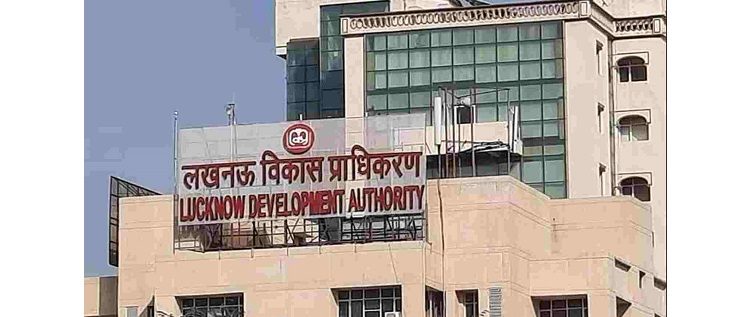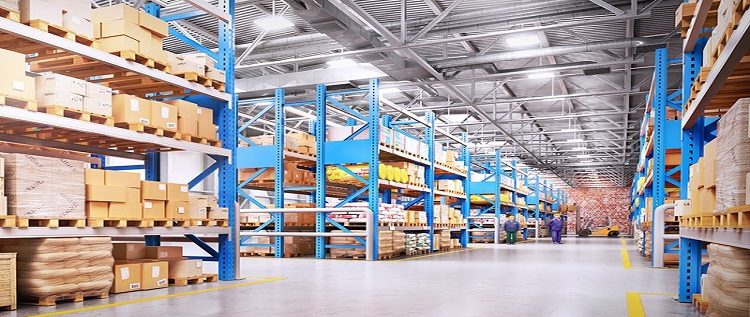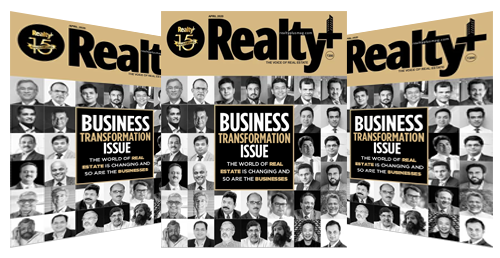E - PAPER
Indian industrial and warehousing sector likely to touch INR495 billion by 2021
In the past, the Indian industrial and warehousing sector has been characterized by fragmented sheds and godowns. However, led by demand for larger facilities from e-commerce companies, the sector is becoming more organized. Transformation is brought about by government initiatives, global trade dyn
 BY
Realty Plus
BY
Realty Plus
Published - Tuesday, 03 Dec, 2019

In the past, the Indian industrial and warehousing sector has been characterized by fragmented sheds and godowns. However, led by demand for larger facilities from e-commerce companies, the sector is becoming more organized. Transformation is brought about by government initiatives, global trade dynamics, an influx of technology and evolving consumption patterns. Occupier preferences are changing and investor interest is increasing.
“Occupiers mulling large contiguous warehouse leases, especially in the e-commerce and 3PL sectors, should look at select micromarkets in Mumbai and Pune that offer a good mix of industrial and multi-purpose warehouses. Bengaluru should also be explored as it offers seamless transfer of goods between states, benefitting from the removal of state-level taxes”, said Sankey Prasad, Managing Director & Chairman at Colliers International India.
The industrial and warehousing sector in India has attracted significant investor interest since 2017 led by robust demand from e-commerce and other consumer-led occupiers. As per Colliers Research, the sector has attracted interest from multiple large institutional investors since 2017, with investment inflows of INR254 billion (USD3.6 billion), signifying a large pool of capital available for investment in this sector. We project the investment inflow is likely to touch INR495 billion (USD7 billion) by 2021 as existing participants expand their portfolio and new players enter the market.
Factors driving industrial and warehousing demand
The Indian industrial and warehousing sector is benefiting from government policy initiatives such as the Goods and Services Tax (GST) implementation and Make in India program, as well as global trade dynamics and evolving consumption patterns. The initiatives augmented growth and private sector participation in a sector which was not well-regulated.
GST heralding modernization of warehousing facilities
The warehousing market in India has long been fragmented; characterized by Grade B warehouses, godowns and sheds. We believe that now with institutional investors descending into the sector, more top-tier developers are likely to enter the sector and develop superior and more efficient Grade A warehouses. In order to compete with such warehouses, we urge local developers to upgrade their facilities.
Large consumption market with strong growth in e-commerce
The uptick in e-commerce led warehousing demand is visible from significant investments in warehousing space made by leading e-commerce majors. As per Colliers Research, e-commerce companies have been leasing large spaces in the range of 100,000-500,000 sq ft.
Make in India: Catalyst for manufacturing-led industrial and warehousing demand
Growth in the manufacturing industry bodes well for industrial and warehousing sector as large manufacturing plants require a wider ecosystem comprising of suppliers and distributors. Oragadam in Chennai and Chakan in Pune are established manufacturing hubs in India and have been witnessing increasing demand for light assembly warehousing units.
Indian manufacturing to benefit from evolving global trade dynamics
The ongoing trade tensions between the United States and China present a major opportunity for India. In recent months, India has been gaining traction as a manufacturing hub.
Corporate tax reduction likely to improve competitiveness
We believe that the lower corporate income tax rate should enhance India’s competitiveness vis-à-vis other potential manufacturing hubs in Taiwan and Southeast Asia, such as Vietnam, Thailand and Indonesia. We expect India to benefit from lower tax rate than the global average corporate tax rate of 23.8%, and the Asian average of 23.8%, and the Asian average of 21.1%.This tax rate concession should leave the companies with more cash for investment and expansion and persuade them to remain and expand in India.
“Investments into the industrial and warehousing sector will further increase as foreign and domestic players expand driven by favourable demand drivers and a simpler taxation regime. Hence, developers may look at collaborating with corporate and government agencies that own land banks,” says Megha Maan, Senior Associate Director, Research at Colliers International India
We have analyzed the industrial and warehousing sector across India’s seven major cities, covering key trends evolving in the sector.
Bengaluru (Average rent is INR16-35 per sq ft per month)
Over the last decade, Bengaluru has seen the emergence of several warehousing corridors. The Hosur Road belt in the south of the city has witnessed industrial growth led by the Karnataka Industrial Areas Development Board (KIADB). Subsequent to the implementation of the GST, companies are preferring this location for warehousing as it offers a seamless transfer of goods between neighbouring states, benefitting from the removal of state-level taxes, post GST implementation. The industrial corridor of Hoskote-Narsapura gained prominence due to its ease of accessibility to Sriperumbudur in Chennai, which is an established automobile hub. Over the last decade, Nelamangala - Dabaspete cluster has been emerging as an important industrial and warehousing location with heavy industries relocating from the Peenya industrial area to Dabaspete for industrial facilities and further into Nelamangala for warehousing facilities.
Chennai (Average rent is INR14-30 per sq ft per month)
With a population growth rate of 7.7% over the last decade, Chennai is a thriving metropolitan city whose large population results in a huge demand for consumer goods. Hence, the northern warehousing cluster has started to experience development of warehouses owing to seamless connectivity with the residential pockets in the city via National Highway 16.
Delhi NCR (Average rent is INR15-25 per sq ft per month)
The NCR not only caters to the intrinsic warehousing demand but also acts as a key storage and warehousing hub for the neighboring states of Punjab, Uttar Pradesh, Haryana and Rajasthan. The leasing activity was led by 3PL operators garnering a 20% share in gross leasing in 2018 but a sudden growth in e-commerce has resulted in increased demand for warehouses in the NCR.
Hyderabad (Average rent is INR14-20 per sq ft per month)
The majority of warehousing activity in Hyderabad is concentrated in the Kompally-Jeedimetla-Medchal cluster. This cluster accounts for an about 90% of the warehousing stock in the city, primarily driven by engineering & manufacturing, pharmaceutical, healthcare and industrial spare parts occupiers due to the presence of infrastructure including the Hyderabad-Nagpur Highway (National Highway 44), Internal Ring Road (IRR) and Outer Ring Road (ORR).
Kolkata (Average rent is INR18-24 per sq ft per month)
The Dankuni – Srirampur - Baidyabati cluster is a major warehousing cluster having seamless access from Durgapur Expressway as well as Old Delhi Road, both the locations are populated with industrial parks and warehouses.
Mumbai (Average rent is INR18-25 per sq ft per month)
The demand for warehousing space in Mumbai is driven by two factors, manufacturing?led demand and consumption?led demand. While major occupiers in the manufacturing industry have began shifting to nearby cities like Pune, owing to the infrastructure provided by the Maharashtra Industrial Development Corporation (MIDC), warehousing activities have flourished in Mumbai, on account of the large consumption base and port-driven export-import (EXIM) cargo movement.
Pune (Average rent is INR15-25 per sq ft per month)
Pune is a major manufacturing hub, host to automobile, engineering, auto ancillary and electronics companies. Over the last decade, the city and its surroundings have witnessed growth in the warehouse market too, driven by the city’s consumption. This is led by a migrant population helped by the growth in the IT-BPM sector, as well as the city’s reputation as the education capital of India.
RELATED STORY VIEW MORE
TOP STORY VIEW MORE

Mixed Outlook for Australia's Housing Sector In 2024
Mixed Outlook for Australia's Housing Sector In 2024
05 December, 2024NEWS LETTER
Subscribe for our news letter
E - PAPER
-

CURRENT MONTH 
LAST MONTH














